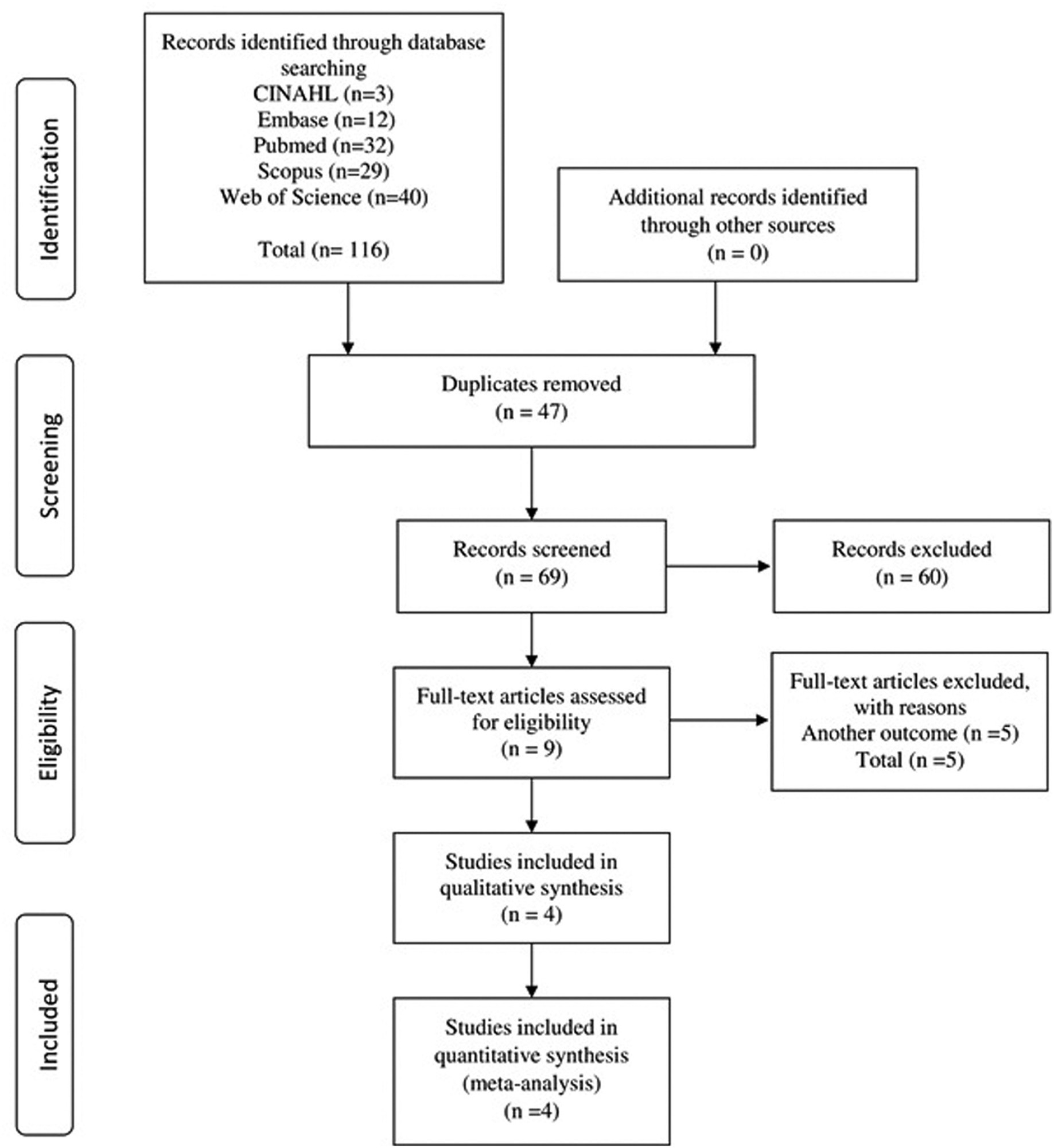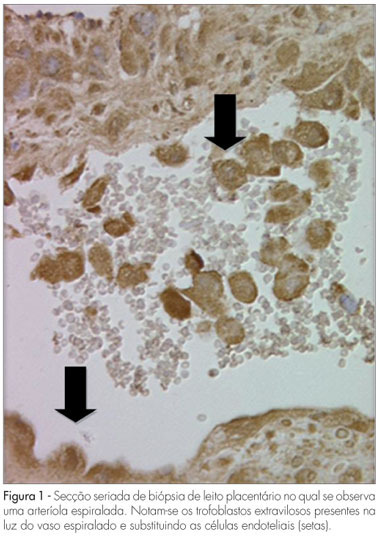Summary
Revista Brasileira de Ginecologia e Obstetrícia. 2023;45(10):609-619
To investigate the clinicopathological significance and prognosis of the expression of the anterior gradient 3 (AGR3) protein in women with breast cancer.
The PubMed, CINAHL, EMBASE, Scopus, and Web of Science databases were searched for studies published in English and without restrictions regarding the year of publication. The search terms were: breast cancer AND anterior gradient 3 OR AGR3 expression.
We included observational or interventional studies, studies on AGR3 protein expression by immunohistochemistry, and studies on invasive breast cancer. Case reports, studies with animals, and reviews were excluded. In total, 4 studies were included, containing 713 cases of breast cancer.
Data were extracted on clinicopathological characteristics and survival. A meta-analysis of the prevalence of AGR3 expression was performed according to the clinicopathological characteristics, hazard ratios (HRs), and overall survival and disease-free survival.
The expression of AGR3 was found in 62% of the cases, and it was associated with histological grade II, positivity of estrogen and progesterone receptors, low expression of ki67, recurrence or distant metastasis, and lumen subtypes. In patients with low and intermediate histological grades, AGR3 expression was associated with worse overall survival (HR: 2.39; 95% confidence interval [95%CI]: 0.628–4.159; p = 0.008) and worse disease-free survival (HR: 3.856; 95%CI: 1.026–6.686; p = 0.008).
The AGR3 protein may be a biomarker for the early detection of breast cancer and predict prognosis in luminal subtypes. In addition, in patients with low and intermediate histological grades, AGR3 protein expression may indicate an unfavorable prognosis in relation to survival.

Summary
Revista Brasileira de Ginecologia e Obstetrícia. 2001;23(9):609-609
DOI 10.1590/S0100-72032001000900010
Summary
Revista Brasileira de Ginecologia e Obstetrícia. 2001;23(9):609-610
DOI 10.1590/S0100-72032001000900011
Summary
Revista Brasileira de Ginecologia e Obstetrícia. 2010;32(12):609-616
DOI 10.1590/S0100-72032010001200008
Preeclampsia is a systemic syndrome characterized by inflammatory and antiangiogenic states. The pathogenesis of preeclampsia involves deficient trophoblast invasion that is responsible for altered uterine blood flow and placental oxidative stress. The damaged placenta produces higher concentrations of sFlt-1, a soluble receptor for VEGF and PlGF that is released in the maternal circulation and is involved in endothelial dysfunction. Actually, all processes involved in inflammation, endothelial dysfunction and oxidative stress are strongly correlated and act in a synergistic way. Recent data have shown that an increase in serum concentrations of sFlt-1 initiates 5 to 6 weeks before the clinical manifestations of preeclampsia and these alterations correlate with a decrease in serum concentrations of PlGF. Therefore, both sFlt-1 and PlGF have been suggested to be useful for an early-diagnosis of preeclampsia. The knowledge about the role of antiangiogenic factors in the pathogenesis of preeclampsia has raised the possibility of a therapy involving these factors.In this article we revisited the pathogenesis of preeclampsia addressing its antiangiogenic and inflammatory states.In conclusion, we correlated these alterations with the higher risk for cardiovascular diseases presented by these women in future life.

Summary
Revista Brasileira de Ginecologia e Obstetrícia. 2009;31(12):609-614
DOI 10.1590/S0100-72032009001200006
PURPOSE: to describe the genetic diversity of HIV-1 isolates from serum positive women followed up at a reference center. METHODS: transversal study, including 96 women with two ELISA serological tests and a Western Blot confirmatory test. The viral charge was determined by the b-DNA kit, and the counting of T CD4 and T CD8 lymphocytes, by the Excalibur flow cytometry, from the samples of peripheral blood. The extraction and purification of pro-viral DNA was performed by the polymerase (PCR) chain reaction, using the QIAamp Blood kit (Qiagen Inc., Chatsworth, CA, U.S.A.). Sequencing of the pol region was done in 52 isolates with the 3100 Genetic Analyzer (Applied Biosystems Inc., Foster City, CA), and the genotyping was assessed by the Rega Subtyping Tool. The resistance pattern to anti-retrovirals (ARV) was inferred by the algorithm from the Stanford HIV Resistance data bank. Participants' clinical stages were defined as A, B or C, according to the criteria established by the Center for Diseases Control (CDC). For statistical analysis, the χ2 test was used for the categorical variables and the Student's t test, for the numerical variables. RESULTS: The average age of the sample, the disease and treatment average duration were respectively: 33.7 years old, 3.8 and 2.5 years. The viral charge average was log10 2.3 copies/mL; the T CD4 e T CD8 lymphocytes, 494.9 cells/µL and 1126.4 cells/µL. Concerning the clinical stage, 30 women were in stage A, 47 in B and 19 in C. Sequencing from the 52 isolates found 33 of B subtype, 4 of F, 1 of C and 14 of BF recombinant. The analysis of resistance to ARV has shown 39 (75.0%) susceptible isolates, 13 (25.0%) resistant to reversal transcriptase inhibitors (RTIN), and 3 (5.7%) resistant to protease inhibitor (PI). CONCLUSIONS: There has been a large variety of HIV-1 and a high percentage of isolates resistant to ARV in the studied sample.
Summary
Revista Brasileira de Ginecologia e Obstetrícia. 2016;38(12):609-614
To assess depression, domestic violence and the use of substances in women with recurrent miscarriages.
The Abuse Assessment Screen (AAS), the Edinburgh Postnatal Depression Scale (EPDS) and the Alcohol, Smoking and Substance Involvement Screening Test (ASSIST) were used to assess violence, depression and the use of substances among women with recurrent miscarriages. The population corresponded to patients receiv-ing prenatal care from June to August 2014. Multiple logistic regression was used to assess the multivariable relationship between depression and sociodemographic, psychosocial and medical characteristics (p < 0,10).
The prevalence of depression was of 41.3% (95% confidence interval [CI] 1/4 28.3-55.7%). One third of the pregnant women (32.6%) reported emotional or physical violence, and 13% were classified as abusing or addicted to tobacco according to ASSIST. History of psychiatric diseases was associated with depression (p 1/4 0.005). Violence during life demonstrated a modest association (p 1/4 0.073) with depression, as well as the number of miscarriages (p 1/4 0.071).
Depression is a frequent disease among pregnant women with recurrent miscarriages. The results of this investigation suggest that a systematic assessment of depression and its associated conditions, such as domestic violence and the use of substances, should be part of the prenatal follow-up visits for women with recurrent miscarriages.
Summary
Revista Brasileira de Ginecologia e Obstetrícia. 2002;24(9):609-614
DOI 10.1590/S0100-72032002000900007
Purpose: the objective of the present study was to determine the number and type of deliveries, category of admission to the hospital, occupation and obstetrical diagnosis for adolescents from the municipality of Ribeirão Preto, from January 1992 to December 1996. Methods: the information obtained from hospital discharge forms was analyzed at the Hospital Data Processing Center. The 6.04a-text processor Epi-Info System, a data bank and statistics for epidemiology produced by the Centers of Disease Control and Prevention (Atlanta, GA, USA), and Dbase IV were used to process the information. The association between variables was tested by the chi² test, with the level of significance set at 5%. The analyzed parameters were: number and type of delivery, category of hospital admission, occupation and obstetric diagnosis. Results: a total of 42,969 deliveries occurred during the study period, among which 7,134 (16.6%) corresponded to adolescent deliveries. An increase in the number of deliveries by girls in this age range occurred over the years, from 1,225 in 1992 to 1,538 in 1996. Deliveries were reported starting from 12 years of age, with a gradual increase in this number, especially after 14 years of age, when a 104.2% increase occurred for deliveries at this age, followed by 48.8% at 15 years, 36.1% at 16 years, 14.0% at 17 years, 52.8% at 18 years, and with practically no increase among 19-year-old girls. The highest number of deliveries (5,709) was recorded for the unified health system category of admission, followed by 1,277 deliveries for the prepaid category and 148 deliveries for the private category. With respect to occupation, 14.1% of the patients belonged to the economically active population, while 85.8% did not. Of the total deliveries, 59.2% were normal, 5.6% were forceps deliveries, and 35.2% were cesarean sections. The most frequent obstetrical diagnoses were: problems of fetus or placenta affecting maternal management (7.9%), fetus-pelvis disproportion (6.0%), problems with the amniotic cavity and membranes (5.0%), hypertension complicating delivery and puerperium (3.5%), and premature or false labor (3.4%). Conclusions: most deliveries were normal and occurred more frequently at the end of adolescence, especially among girls belonging to the unified health system. There was a predominance of adolescents not belonging to the economically active population. Some obstetrical complications were diagnosed at the time of resolution of pregnancy.
Summary
Revista Brasileira de Ginecologia e Obstetrícia. 2000;22(10):609-613
DOI 10.1590/S0100-72032000001000002
Purpose: the effects of corticosteroids on the female urinary tract are not well understood, specially in climacteric women with or without estrogen replacement therapy. We studied the effects of corticosteroids on the blood vessels and epithelium of the bladder and urethra of female rats. Method: fifty-four female rats were used, divided into five groups. Group I - ten castrated female rats; Group II - eleven castrated female rats which receivedintraperitoneally 15 mg/kg weight prednisolone, for 26 days; Group III - twelve castrated female rats which received the same amount of corticosteroid, during the same time, and subcutaneously 10 mg/kg 17 beta-estradiol, in the last five days before they were sacrificed; Group IV - eleven castrated rats which received placebo for 26 days; and Group V - no castrated female rats which received the same dose of corticosteroid during the same time as in Group II. Results: we observed an average of 1.8 vessels in the bladder of the castrated group which received corticosteroid, a similar number to that of those which received corticosteroid and estrogen, compared with 0.8 vessel in the placebo group. Regarding the urethra, 0.7 vessel was observed in the group which received corticosteroid, as compared with 0.9 vessel in the group treated with corticosteroid associated with estrogen and 0.4 in the placebo group. Regarding the mucous membrane, the vesical epithelium thickness of 14.1 mm in the placebo group increased to 20.6 mm in that with corticosteroid and to 22.6 mm in that with corticosteroid plus estrogen. The urethral epithelium thickness of 12.4 mm in the placebo group increased to 15.1 mm in the group with corticosteroid and to 16.7 mm in that with corticosteroid plus estrogen. Conclusion: corticosteroids significantly increased the vascularization and the thickness of the vesical and urethral epithelia of castrated female rats.
